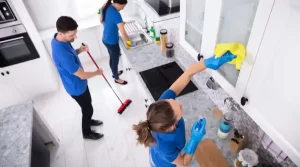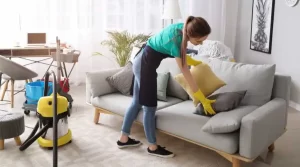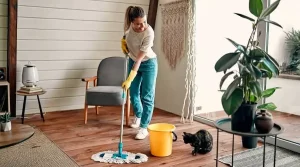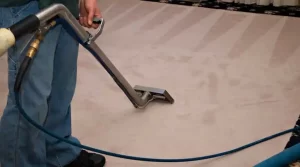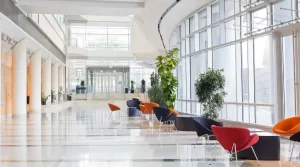According to the US Environmental Protection Agency, “sick building syndrome, or SBS, is used to characterize instances in which building occupants have acute health and comfort consequences that appear to be linked to time spent in a building, but no specific ailment or cause can be established” (EPA). Or, to put it another way, a building could be making you sick. Learn the causes of sick building syndrome and its symptoms of it with the help of the professionals at JP Salt Lake City Commercial Cleaning.
Sick-Building Syndrome signs
Some people could believe that a virus causes their SBS. When you have a cold, virus, or another disease similar to it, however, your symptoms follow you everywhere—from home to work and back again. When you leave the area, any symptoms of SBS are likely to rapidly go away. As you remain outside the building, you will begin to feel better.
One symptom, a combination of symptoms, or even a change in symptomology from day to day could be the result of sick-building syndrome. There are times when one SBS symptom affects you while another affects a coworker. Sick building syndrome can show a variety of symptoms, including:
- Headaches
- Dizziness
- with or without coughing, chest pain
- Nausea
- fatigue and muscle discomfort
- sick throat with a fever
- discomfort in the eyes
- A rash on the skin bleeding noses, congested nostrils, or stuffy noses being unable to concentrate, and having a preference for scents
No matter which symptoms are present in conjunction with your employees, being ill as a result of the environment may have an adverse effect on performance. According to a National Center for Biotechnology Information (NCBI) report, SBS can actually decrease productivity and possibly raise absenteeism. If you’ve recently noticed an increase in sick days, look into the building as a possible perpetrator. Check this out.
Sick Building Syndrome: Workplace Prevention Techniques
You can help with SBS prevention in your establishment by being aware of some of the causes of the condition. According to the EPA, the causes and contributing factors for sick building syndrome are numerous. Some of the SBS reasons include the following:
- ventilation that is insufficient
- pollutants in the interior or outdoor environment biological pollutants, such as bacteria and mold
Follow these steps to reduce the possibility that SBS will spread throughout your workplace:
- enhance ventilation.
- Be sure to keep your HVAC systems maintained and clean.
- Utilize HVAC filters with large load capacities, and replace them periodically.
- Replace ceiling tiles that have been flooded in order to prevent the development of mold and mildew.
- Any carpet that seems to be flooded needs to be replaced.
- Regularly clean all tile and grout to prevent the growth of mold.
- Get rid of any animal excrement that may be present, including rat, bird, and bug droppings.
By reducing the number of dust mites, mold spores, pollen, and other allergens in the office, it is possible to improve office air quality and minimize the symptoms of sick building syndrome. Furthermore, regular cleanings may keep the facility looking spotless and inviting for customers and staff alike.
Last but not least, a health facility is one that is clean. Increased productivity, decreased sick days, and improved employee morale may all be the benefits of a clean workplace. If you’re worried that there might be issues in your building that could aggravate the signs of sick building syndrome, contact the professionals at JP Salt Lake City Commercial Cleaning. We offer a number of services to fit your unique needs and hectic schedule. Given that we’re committed to delivering the greatest standards of cleanliness on every job, we’re happy to help you raise the bar for your facilities.


